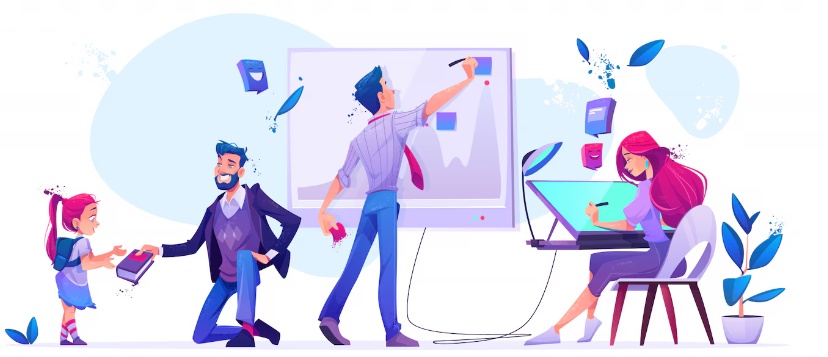In storytelling, visuals play a crucial role in bringing narratives to life. Among the various techniques available, 2D character animation is a powerful tool for conveying emotions, building connections with audiences, and driving the narrative forward. Let's delve into the significant role that 2D character animation plays in storytelling and narrative development.
Engaging Visual Communication
2D character animation offers a unique blend of visual appeal and narrative depth, making it an effective medium for communicating complex ideas and emotions. Through the use of expressive characters, vivid backgrounds, and dynamic movements, 2D animation captures the essence of storytelling in a captivating and relatable manner. Characters come to life on screen, allowing viewers to empathize with their struggles, triumphs, and personal growth throughout the narrative journey.
Character Development and Arcs
One of the key strengths of 2D character animation lies in its ability to portray character development and arcs effectively. From the initial introduction of characters to their evolution over time, animation allows for subtle nuances and details that contribute to the richness of the storytelling experience. Through facial expressions, body language, and interactions with other characters, audiences witness the growth and transformation of protagonists and supporting cast members, fostering deeper connections and emotional investment in the narrative.
Visual Metaphors and Symbolism
In addition to conveying literal storytelling elements, 2D character animation excels in utilizing visual metaphors and symbolism to convey deeper themes and messages. Through clever use of imagery, color symbolism, and visual motifs, animators can imbue scenes with layers of meaning, encouraging viewers to interpret and analyze the narrative on multiple levels. These visual cues enhance the storytelling experience, allowing for a nuanced exploration of themes such as love, loss, hope, and redemption.
Enhanced Engagement and Immersion
Ultimately, the role of 2D character animation in storytelling extends beyond mere entertainment it enhances engagement and immersion, drawing audiences into the narrative world and making them active participants in the story. By creating compelling characters, captivating visuals, and engaging storylines, animation captivates viewers' attention and sparks their imagination, fostering a sense of connection and empathy with the narrative and its themes.
The Evolution of 2D Character Animation:
The history of 2D character animation is a tale of innovation and creativity. From the early days of hand-drawn animation on paper to the advent of digital tools and software, animators have continually pushed the boundaries of what's possible. Today, advancements in technology have revolutionized the animation process, allowing for greater efficiency, flexibility, and creativity in bringing characters to life on screen.
Crafting Compelling Characters:
At the heart of every captivating narrative lies memorable characters. In 2D animation, character design plays a crucial role in shaping the identity and personality of these characters. From their physical appearance to their mannerisms and expressions, every detail contributes to their believability and relatability. Skilled animators understand the importance of character design in storytelling and strive to create characters that resonate with audiences long after the story ends.
Setting the Scene:
While characters take center stage in 2D animation, the world they inhabit is equally important in shaping the narrative. Backgrounds and environments provide context, atmosphere, and mood, enhancing the storytelling experience and immersing viewers in the fictional world. Whether it's a bustling cityscape, a serene countryside, or a fantastical realm, the careful design and execution of backgrounds enrich the narrative tapestry and transport audiences to new and exciting places.
Sound and Motion:
In 2D animation, sound and motion work in harmony to create a seamless storytelling experience. Sound effects, music, and voice acting add depth and dimension to characters and scenes, evoking emotions and heightening tension. Likewise, animation timing—the speed and rhythm of movements—plays a crucial role in pacing the narrative, influencing the audience's engagement and immersion in the story. When executed effectively, the synergy between sound and motion elevates the storytelling to new heights.
Beyond the Screen:
The impact of 2D animation extends beyond the confines of the screen, influencing other forms of visual storytelling such as comics, graphic novels, and literature. The principles of character design, pacing, and narrative structure inherent in 2D animation are echoed in these mediums, creating a synergy that transcends traditional boundaries. As such, the influence of 2D animation continues to shape and inspire storytellers across various artistic disciplines, leaving a lasting legacy in the world of narrative arts.
Conclusion:
In conclusion, 2D character animation serves as a powerful catalyst for storytelling and narrative development, offering a rich tapestry of visual storytelling techniques to convey emotions, explore themes, and engage audiences on a profound level. Through its ability to bring characters to life, depict character development, utilize visual metaphors, and enhance engagement, 2D animation elevates storytelling to new heights, leaving a lasting impact on viewers long after the credits roll.


No comments yet